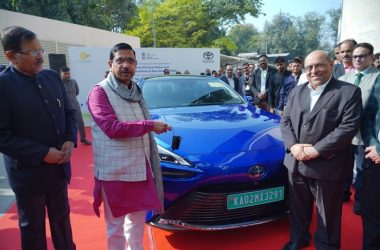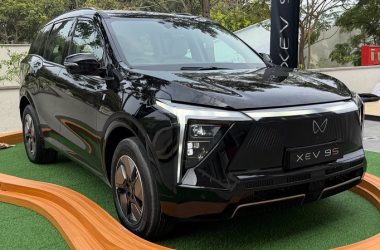New Delhi – In a landmark move to accelerate electric vehicle (EV) adoption and strengthen India’s green mobility ecosystem, the Government of India has launched the ‘PM Electric Drive Revolution in Innovative Vehicle Enhancement (PM E-DRIVE) Scheme.’ The initiative, officially notified on September 29, 2024, comes with a ₹10,900 crore budget and is set to run from April 1, 2024, to March 31, 2026.
The scheme is a successor to the Electric Mobility Promotion Scheme (EMPS) 2024, which was initially rolled out for six months. PM E-DRIVE aims to boost EV demand through direct incentives for consumers while enhancing the country’s EV infrastructure and testing capabilities.
Key Highlights of PM E-DRIVE Scheme
1. Introduction of E-Vouchers
- The Ministry of Heavy Industries (MHI) has introduced E-Vouchers to facilitate direct demand incentives for EV buyers. These vouchers will streamline subsidy disbursal, ensuring buyers benefit at the point of purchase.
2. Focus on New EV Segments
- Recognizing the growing role of e-ambulances and e-trucks, the scheme has earmarked ₹500 crore each to encourage their deployment across the country.
3. Strengthening Testing and Certification
- To ensure quality and safety in the EV sector, ₹780 crore has been allocated to upgrade vehicle testing agencies identified under the scheme.
Breakdown of the ₹10,900 Crore Budget
The PM E-DRIVE scheme is structured into three major components:
- Subsidies – ₹3,679 crore for demand incentives covering approximately 28 lakh electric vehicles, including:
- e-2Ws (electric two-wheelers)
- e-3Ws (electric three-wheelers)
- e-ambulances & e-trucks
- Other emerging EV categories
- Grants – ₹7,171 crore for infrastructure development, including:
- e-buses for public transport
- Public charging stations
- Testing agency upgrades
- Administrative Costs & Public Awareness – Funding for project implementation, IEC (Information, Education & Communication) activities, and the Project Management Agency (PMA).
Consumer-Centric Incentives
Unlike previous policies, PM E-DRIVE focuses exclusively on consumers rather than manufacturers. Key financial incentives include:
✅ Demand Incentives – Reducing the upfront cost of EVs through subsidies, which are reimbursed to OEMs (Original Equipment Manufacturers).
✅ Charging Infrastructure Development – ₹2,000 crore allocated for expanding public EV charging networks.
✅ Capital Asset Grants – ₹4,391 crore dedicated to deploying 14,028 e-buses in public transport and ₹780 crore for upgrading vehicle testing agencies.
Strict Eligibility & Monitoring Mechanism
To ensure efficiency and prevent misuse, only vehicles registered under the Central Motor Vehicle Rules (CMVR) and equipped with advanced batteries that meet prescribed performance standards will be eligible for incentives.
Additionally, a Project Implementation and Sanctioning Committee (PISC), led by the Secretary of Heavy Industries, will oversee the scheme’s execution. This inter-ministerial body will also troubleshoot challenges in real-time, ensuring smooth policy implementation.
Government’s Commitment to Sustainable Mobility
Announcing the details of the scheme, Minister of State for Steel and Heavy Industries, Shri Bhupathiraju Srinivasa Varma, emphasized the government’s commitment to making EVs more affordable and accessible while fostering India’s transition to a cleaner transport ecosystem.
With the PM E-DRIVE scheme in motion, India is poised to take a giant leap in e-mobility, reducing carbon emissions, enhancing domestic EV production, and creating a sustainable future for its transportation sector.





